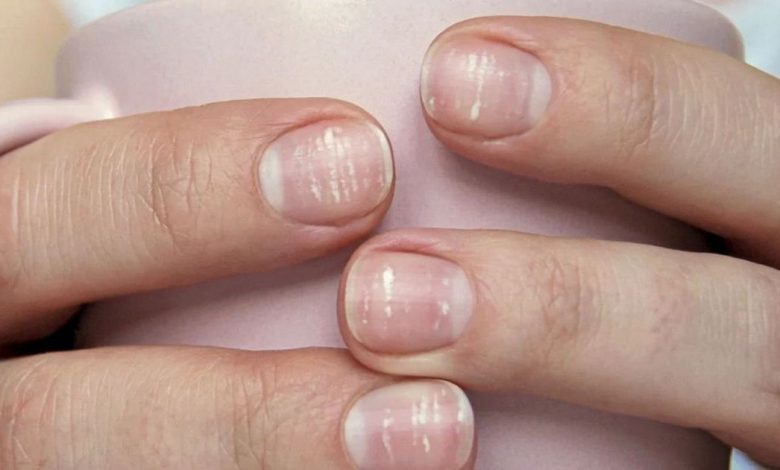Nail anomalies, brittle nails: what is this, causes, symptoms, diagnostics, treatment, prevention

Nail abnormalities; Beau lines; Fingernail abnormalities; Spoon nails; Onycholysis; leukonychia; Koilonychia; Brittle nails
What is nail anomaly?
Nail anomaly is a general term for any condition, associated with nails. It can range from minor cosmetic changes to signs of a more serious underlying condition.. This may include discoloration, thickening of the nails, bundle, breakage or other changes in texture or appearance. It can also apply to such states, like fungal infections or changes, associated with aging.
Diseases and conditions, most commonly causing nail abnormalities
Like the skin, nail abnormalities can reveal a lot about your health:
- Bo lines are depressions on the nail. These lines may appear after illness, nail injury, eczema around the nail, during cancer chemotherapy or undernutrition.
- Brittle nails are often a normal result of aging.. They can also be caused by certain diseases and conditions..
- Koilonychia - an abnormal shape of the nail. The nail has raised ridges, it is thin and curved inwards. This disorder is associated with iron deficiency anemia. .
- Leukonychia are white streaks or spots on the nails, often due to drugs or diseases.
- Pitting is the presence of small depressions on the surface of the nail.. Sometimes the nail crumbles. The nail may become loose and sometimes fall off. Pitting linked to psoriasis and alopecia areata.
- Ridges are tiny raised lines, that develop across or up and down the nail.
Causes of nail anomalies
Causes of nail abnormalities can vary by lifestyle, such as excessive exposure to water or certain chemicals, before diseases. Common reasons include:
- aging
- nail injury
- fungal nail infections
- psoriasis
- scleroderma
- cancer
- eczema
- alopecia areata
- circulatory problems
- malnutrition
- endocrine disorders
- allergy
- thyroid disease
In some cases, newly formed nail abnormalities may be genetic or hereditary..
Symptoms of nail anomalies
Nail anomalies can have a variety of symptoms and may vary depending on the underlying causes.. The most common symptoms include:
- thickening or thinning of the nail
- nail color change
- enlarged ridges or grooves
- avulsion of the nails from the nail bed
- slow nail growth
- brittle or weak nails
- cracking or splitting of the nail
- crumbling of the edges of the nails
Besides, fungal infections can cause additional symptoms, such as white or yellow spots on the nail or separation of the nail from the nail bed.
Diagnosis of nail anomalies
If you experience any symptoms or signs of nail abnormalities, it's important to talk to your doctor. He may examine the affected nails and recommend additional tests to determine the cause of the abnormality.. This may include blood tests or a skin biopsy.
In the case of fungal nail infections, a nail sample may be taken for laboratory testing..
Treatment of nail anomalies
Treatment for nail abnormalities will depend on the cause.. Some of the most common treatments include:
- antifungal drugs for fungal infections
- topical steroids for skin problems
- oral retinoids for the treatment of psoriasis
- cortisone injections for alopecia areata
- oxygen treatments to improve blood circulation
- vitamin supplements for nutritional deficiencies
- thyroid medicines
In some cases, minor nail abnormalities can be treated with simple home remedies..
Home treatment for nail anomalies
For mild nail abnormalities, such as discolored or brittle nails, there are several home treatments, that can help. This includes:
- soaking nails in warm water with a few drops of tea tree oil
- adding vinegar to nail bath, to improve blood circulation
- using a combination of lemon juice and castor oil and rubbing it into the nail bed, to soften the nail
- using a nail file to remove dead skin cells
- using moisturizers to restore the natural sebum of nails
Prevention of nail anomalies
There are a few simple steps, you can take, to prevent the development of nail abnormalities. This includes:
- Wear gloves when handling water or harsh chemicals.
- Keep nails dry and clean
- Avoid artificial nails and glue
- Eat a balanced diet, rich in vitamins and minerals.
- Avoid excessive sun exposure
- Trim your nails regularly
- Regular moisturizing of nails
- Try not to pick or bite your nails
When to See a Doctor for Nail Abnormalities
If your nail abnormality does not improve after home treatments, or if you feel, that it's getting worse, it's important to talk to your doctor. He will be able to determine the underlying causes and recommend the most appropriate treatment.. In some cases, they may also refer you to a dermatologist or orthopedist..
Used sources and literature
American Academy of Dermatology website. 12 nail changes a dermatologist should examine. www.aad.org/public/everyday-care/nail-care-secrets/basics/nail-changes-dermatologist-should-examine. Accessed July 23, 2021.
Second j, Sass U, Theunis A. Diseases of the nails. In: Calonje E, Brenn T, Lazar AJ, Billings SD, eds. McKee’s Pathology of the Skin with Clinical Correlations. 5th ed. Philadelphia, PA: Elsevier; 2020:chap 23.
Tosti A. Diseases of hair and nails. In: Goldman L, Schafer AI, eds. Goldman-Cecil Medicine. 26th ed. Philadelphia, PA: Elsevier; 2020:chap 413.
